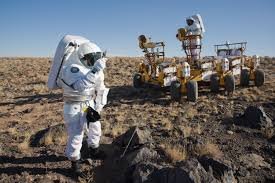NASA is moving past the conventional engineering and biomedical considerations toward a more abstract but valuable element of human space flight – time perception. While the U.S. space agency is preparing for long-duration missions to Mars, it is also taking the opportunity to study how astronauts perceive time when in microgravity and isolation. This research aims to not just look at psychology in space, but also offer design characteristics for long-duration missions, as well as crew safety and health protocols related to deep-space travel.
Understanding Time Perception in Space
Time perception is not something human beings possess in a singular or fixed way. Many different influences exist that generate different responses and meanings of time. Time is not merely something we experience; it is carried out in various environments with different influences, such as light and exposure, physical strain, workloads, and emotional states. On Earth, we experience time with the influence of circadian rhythms and implied 24-hour cycles. In space, astronauts experience significant disruptions to these biological rhythms. As part of their international collaborative work at the International Space Station (ISS), astronauts experience 16 sunsets and sunrises a day and experience life in an environment artificially illuminated under constrained, high-stress conditions. In future missions to Mars, which could last two to three years, these distortions may intensify.
Time perception is not just a matter of philosophy, but a pragmatic thing. It influences decision making, performance of tasks, and reactions in emergencies. NASA believes a distorted sense of time could result in mission-critical errors; reactions that are longer than intended, overestimating or underestimating the time it takes to perform tasks, or intercrewmate conflicts.
NASA’s Investigative Context
The NASA studies occur in the ISS and in settings designed to simulate the ISS, like HERA (Human Exploration Research Analog) and NEK (Russia’s terrestrial Mars analog). Astronauts undertake a series of investigational measures of their temporal precision, such as estimating the duration of visual and audio stimuli, reproducing duration intervals, for example, adjusting their internal clock with different light and sound conditions, and estimating progressively longer temporal intervals of tasks.
NASA combines subjective assessments (how long astronauts feel a task took) with objective data (actual time taken) to calculate the distortion. These are supplemented by data from biometric sensors, sleep trackers, and mood logs.
Notably, astronauts have reported both time “flying by” during high-engagement tasks and time “dragging” during long isolation periods—confirming what psychologists call temporal dilation and compression.
Limitations, Assumptions, and Biases
While this research is groundbreaking, it’s not without limitations.
- Sample size remains small: With limited astronauts, generalizing findings is difficult.
- Subjectivity plays a major role. Emotional state, fatigue, and stress—difficult to control in space—affect individual perception.
- Cultural and personal variation in how time is experienced could influence data, making it harder to build universal conclusions.
- Technological dependence: Monitoring tools might interfere with natural behavior, skewing results.
Additionally, NASA’s institutional focus on American astronauts, mostly from similar training and cultural backgrounds, may introduce biases. Inclusion of data from ESA, Roscosmos, and other international agencies could improve reliability.
Operational, Psychological, and Ethical
If NASA can accurately predict and compensate for time distortion, mission efficiency and safety could improve. For example, task scheduling could be dynamically adapted based on real-time assessments of how astronauts are experiencing time. AI and crew interfaces could be modified to provide perceptual “anchors” such as ambient light shifts, audio cues, or even meditative routines.
There are psychological benefits too. Time perception links deeply with mental health. An astronaut who feels time dragging may experience depression or isolation. Interventions could prevent burnout, cognitive fatigue, and interpersonal tensions.
Ethical considerations arise as well: Should mission planners have access to this deeply personal data? How will privacy be maintained? Would psychological tracking become compulsory for space travelers?
Lessons from Earth and the Past
Similar phenomena are studied in submariners, polar researchers, and even during COVID-19 lockdowns. Studies have shown that people in isolation and monotonous environments often lose track of days, misjudge durations, and experience emotional disconnection.
Historical space missions have already demonstrated anomalies. During Skylab 4 (1973–74), astronauts reported boredom and cognitive fatigue, leading to scheduling conflicts with mission control. These past insights underscore the need for predictive behavioral models in long-term missions.
Expert Opinions and Future Outlook
Dr. Vadim Gushin, a Russian space psychologist, emphasizes that “space-time” is more than a physics concept—it’s a lived human reality. NASA’s Chief Health and Performance Officer, Dr. Jancy McPhee, states that addressing this issue is essential for “transforming mission duration into mission success.”
Looking ahead, artificial intelligence systems may be trained to detect signs of temporal distortion in astronauts and suggest personalized coping strategies, like dynamic workload adjustments or even psychological counseling sessions delivered through VR.
Moreover, commercial space ventures such as SpaceX and Blue Origin may eventually apply NASA’s findings to enhance space tourism or private missions, making civilian space travel safer and more humane.
A Ticking Clock Toward Mars
As humanity prepares to set foot on Mars, understanding how astronauts perceive time could be as vital as ensuring their oxygen supply. NASA’s research may look abstract on the surface, but it touches every aspect of human survival, cognition, and cooperation in deep space. By decoding the clock inside our minds, we may finally master the countdown to interplanetary life—not just physically, but psychologically.
FOR MORE UPDATES, VISIT QUESTIQA.US







Average Rating